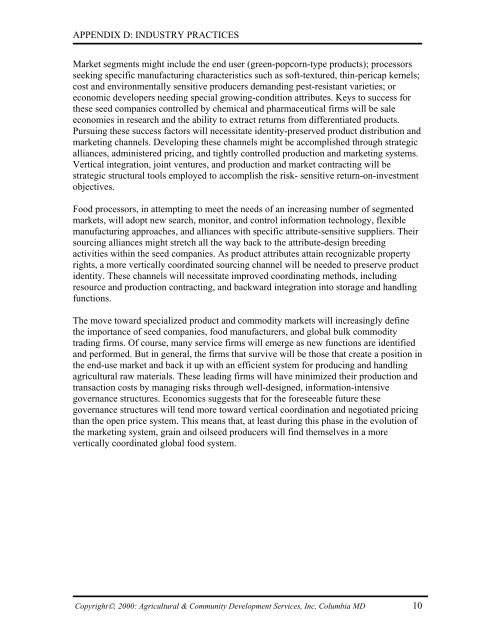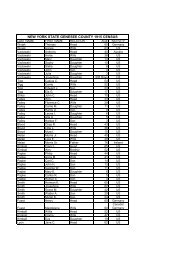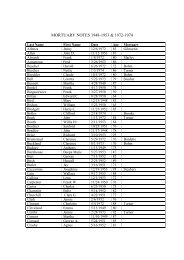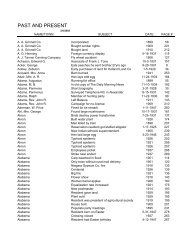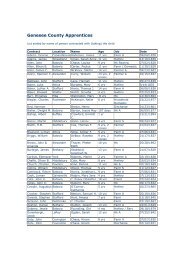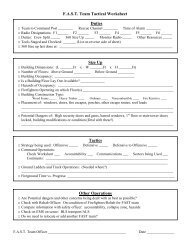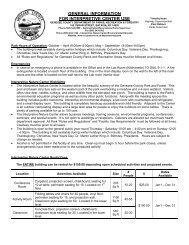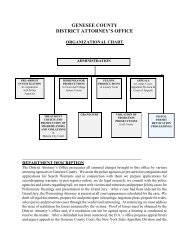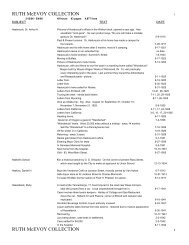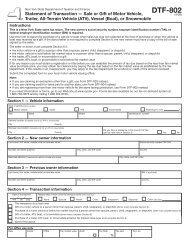Genesee County Agricultural and Farmland Protection Plan
Genesee County Agricultural and Farmland Protection Plan
Genesee County Agricultural and Farmland Protection Plan
You also want an ePaper? Increase the reach of your titles
YUMPU automatically turns print PDFs into web optimized ePapers that Google loves.
APPENDIX D: INDUSTRY PRACTICES<br />
Market segments might include the end user (green-popcorn-type products); processors<br />
seeking specific manufacturing characteristics such as soft-textured, thin-pericap kernels;<br />
cost <strong>and</strong> environmentally sensitive producers dem<strong>and</strong>ing pest-resistant varieties; or<br />
economic developers needing special growing-condition attributes. Keys to success for<br />
these seed companies controlled by chemical <strong>and</strong> pharmaceutical firms will be sale<br />
economies in research <strong>and</strong> the ability to extract returns from differentiated products.<br />
Pursuing these success factors will necessitate identity-preserved product distribution <strong>and</strong><br />
marketing channels. Developing these channels might be accomplished through strategic<br />
alliances, administered pricing, <strong>and</strong> tightly controlled production <strong>and</strong> marketing systems.<br />
Vertical integration, joint ventures, <strong>and</strong> production <strong>and</strong> market contracting will be<br />
strategic structural tools employed to accomplish the risk- sensitive return-on-investment<br />
objectives.<br />
Food processors, in attempting to meet the needs of an increasing number of segmented<br />
markets, will adopt new search, monitor, <strong>and</strong> control information technology, flexible<br />
manufacturing approaches, <strong>and</strong> alliances with specific attribute-sensitive suppliers. Their<br />
sourcing alliances might stretch all the way back to the attribute-design breeding<br />
activities within the seed companies. As product attributes attain recognizable property<br />
rights, a more vertically coordinated sourcing channel will be needed to preserve product<br />
identity. These channels will necessitate improved coordinating methods, including<br />
resource <strong>and</strong> production contracting, <strong>and</strong> backward integration into storage <strong>and</strong> h<strong>and</strong>ling<br />
functions.<br />
The move toward specialized product <strong>and</strong> commodity markets will increasingly define<br />
the importance of seed companies, food manufacturers, <strong>and</strong> global bulk commodity<br />
trading firms. Of course, many service firms will emerge as new functions are identified<br />
<strong>and</strong> performed. But in general, the firms that survive will be those that create a position in<br />
the end-use market <strong>and</strong> back it up with an efficient system for producing <strong>and</strong> h<strong>and</strong>ling<br />
agricultural raw materials. These leading firms will have minimized their production <strong>and</strong><br />
transaction costs by managing risks through well-designed, information-intensive<br />
governance structures. Economics suggests that for the foreseeable future these<br />
governance structures will tend more toward vertical coordination <strong>and</strong> negotiated pricing<br />
than the open price system. This means that, at least during this phase in the evolution of<br />
the marketing system, grain <strong>and</strong> oilseed producers will find themselves in a more<br />
vertically coordinated global food system.<br />
Copyright©, 2000: <strong>Agricultural</strong> & Community Development Services, Inc, Columbia MD 10


